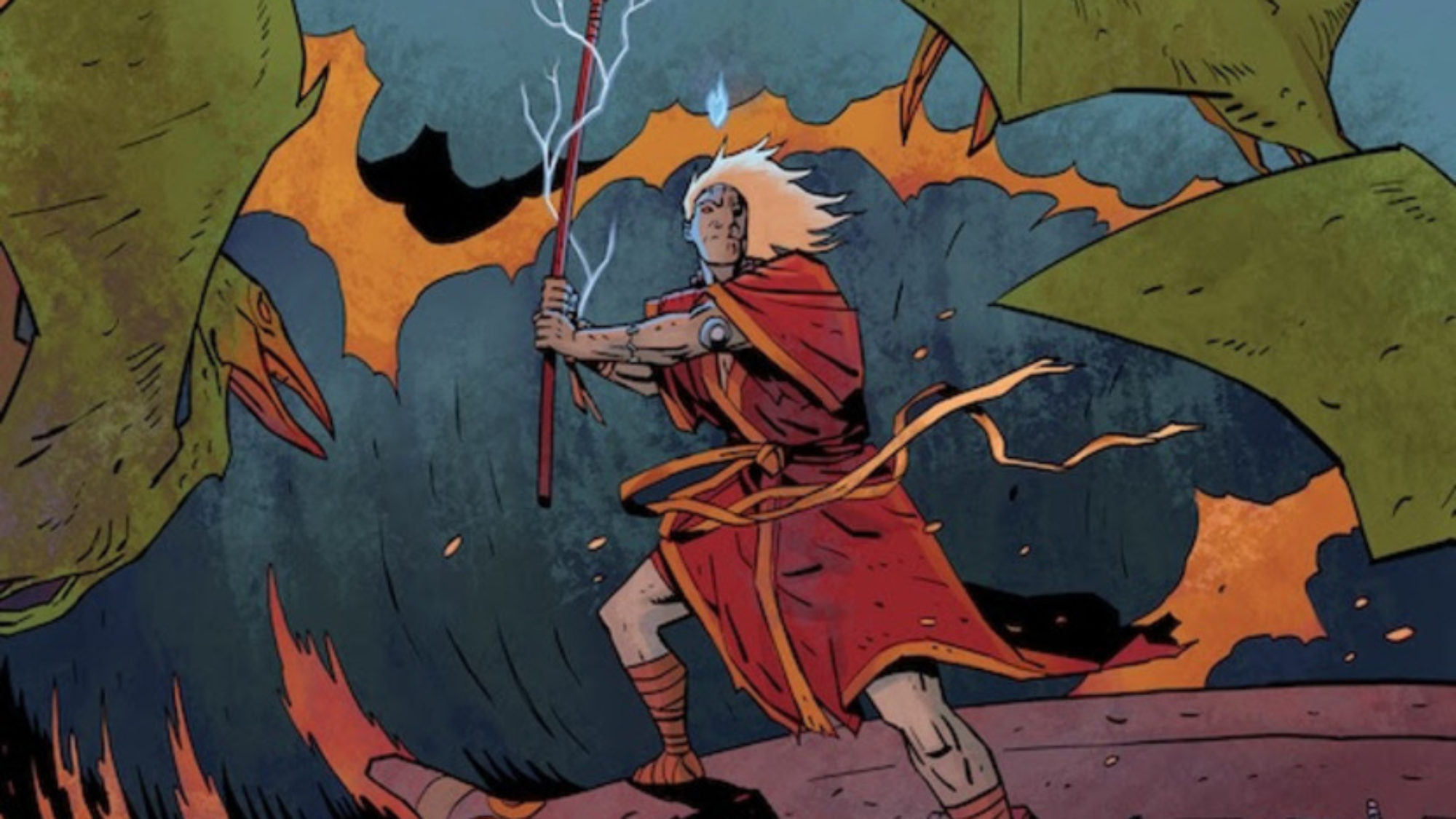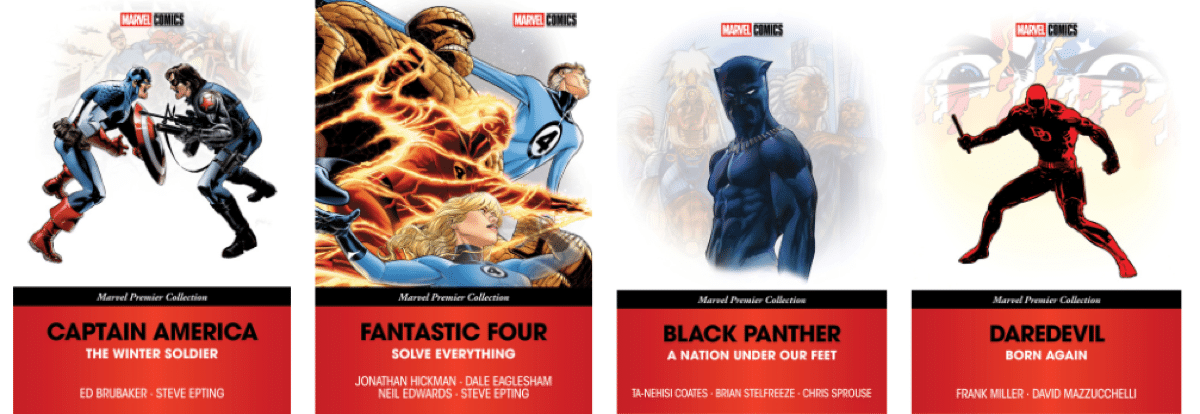Beat’s Bizarre Adventure: Wild wild ice hockey
There are two universal truths in today’s rapidly changing comics industry. The first is that Dog Man is the defining comic of our era. The second is that more people are reading manga and Webtoons (aka vertical scroll comics) than ever before. Therefore we at The Comics Beat have chosen to embark on a new venture: Beat’s Bizarre Adventure. Every week we’ll have three writers recommend some of their favorite books and series from Japan, Korea and elsewhere. In this special (and overdue) Olympics-inspired installment, we have Hokkaido hockey, a Tokyo Olympics monster, and, of course, Slam Dunk.
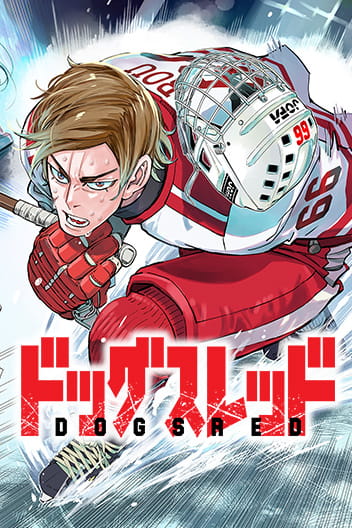
Dogsred
Writer/Artist: Satoru Noda
Translator: John Werry
Lettering: Steve Dutro
Publisher: VIZ
Dogsred is a captivating Japanese manga series by Satoru Noda, known for the acclaimed Golden Kamuy. A remake of Noda’s earlier work, Supinamarada!, Dogsred debuted in Shueisha’s Weekly Young Jump in July 2023 and is being published in English by Viz Media through the Shonen Jump digital service. The series secured a nomination for the 2024 Next Manga Award in the print category.
Set in 2010, Dogsred follows the turbulent journey of Rou Shirakawa, a disgraced junior figure skater who, after a dramatic breakdown at a competition, is permanently banned from the sport. Rou, known as the “Rabid Dog Prince,” relocates with his twin sister to live with their estranged grandparent in the hockey-centric town of Tomakomai. Rou’s passion for skating leads him to the ice hockey rink, where he adapts his figure skating skills to this new sport. His journey is loaded with penalties and setbacks, but also moments of triumph as he finds his place in the hockey world. Meanwhile, his sister Haruna endeavors to reignite his figure skating career.
One of the manga’s strengths is its stunning artwork. Noda’s characters have distinctive, mature features that lend gravity to their struggles regardless of age. The hockey matches are so accurate and rich that you feel as if you are watching them live. They are further elevated by Noda’s extensive research, sports references and authentic depiction of hockey culture.
Rou’s evolution from disgraced figure skater to aspiring hockey player is depicted with both humor and poignancy, highlighting his initial clumsiness and eventual growth. I found the twelfth chapter, which reveals Rou’s true motivations for quitting figure skating, to be especially profound. Noda also includes characters from Golden Kamuy like the bear hunter-turned-coach Nihei.
Dogsred is a refreshing and heartfelt addition to the sports manga genre, offering a unique blend of action, emotion, and redemption. Noda’s passion for hockey and skilfull storytelling make this a must-read for sports manga enthusiasts as well as fans of character-driven stories. — Ilgın Side Soysal
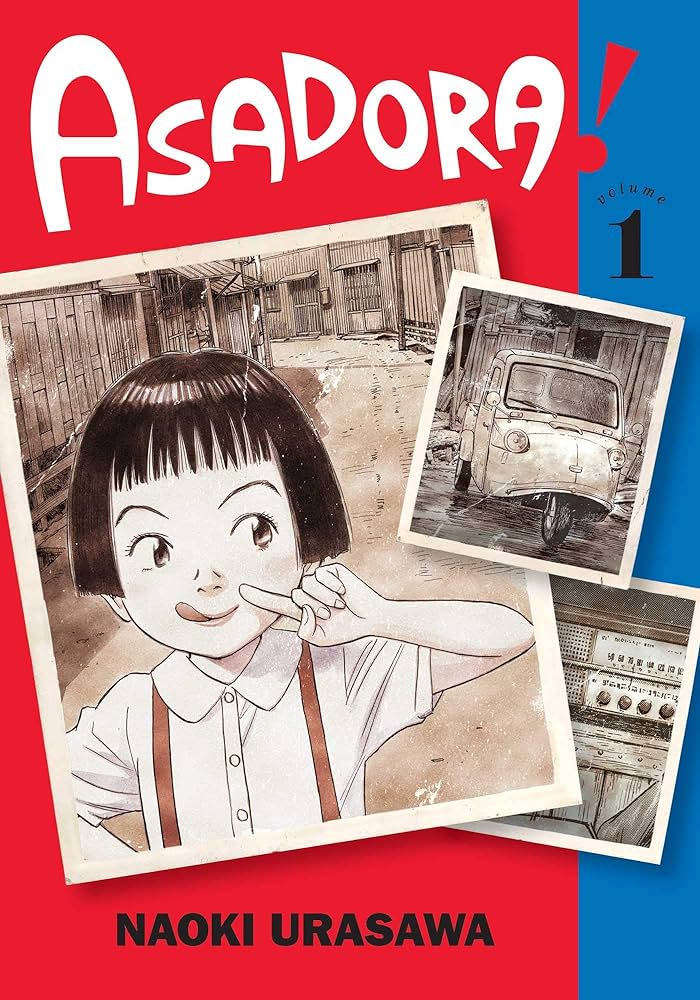
Asadora!
Writer/Artist: Naoki Urasawa
Translator: John Werry
Lettering: Steve Dutro
Publisher: VIZ
It’s October 1964 and Japan is in the grip of Olympic fever. The Tokyo games capture the imagination of the Japanese people. They symbolize the country’s post-war recovery and strength. It’s imperative that they go off without a hitch. Yet the appearance of a creature throws everything into chaos.
This is just a part of Asadora!, the current series by manga master Naoki Urasawa. It follows a young woman and her encounters with a strange massive creature. These lifeforms become an object of obsession for many. The Japanese government wants to make sure it doesn’t make landfall. Asadora, a young pilot, wants to know if it’s responsible for her family’s disappearance in a typhoon. Scientists want to study it.
On the surface, this manga is Urasawa’s version of a kaiju film. He treats the story with all of the seriousness of the original 1954 Gojira directed by the great Ishiro Honda. There are no power slides or wacky alien foes. The creature is a force of nature, destroying everything in its path without a second thought. Urasawa weaves this story through historical events like the devastating Typhoon Vera and the 1964 Olympics.
Just like Honda used Gojira to express atomic fears, Urasawa uses the kaiju genre to examine mid century Japan. This was a time of change for a country recovering from a devastating war. The older members of the cast are haunted by the specter of World War II. Meanwhile the younger cast members embody the promise of this time period. They include an Olympic hopeful, a wannabe pop star and even a woman wrestler.
At the center is Asadora herself. Calling her plucky is an understatement. She challenges everyone but cares deeply for those close to her. There’s no telling how her life will go (the series will at least end in the year 2020) but it certainly won’t be boring. — D. Morris
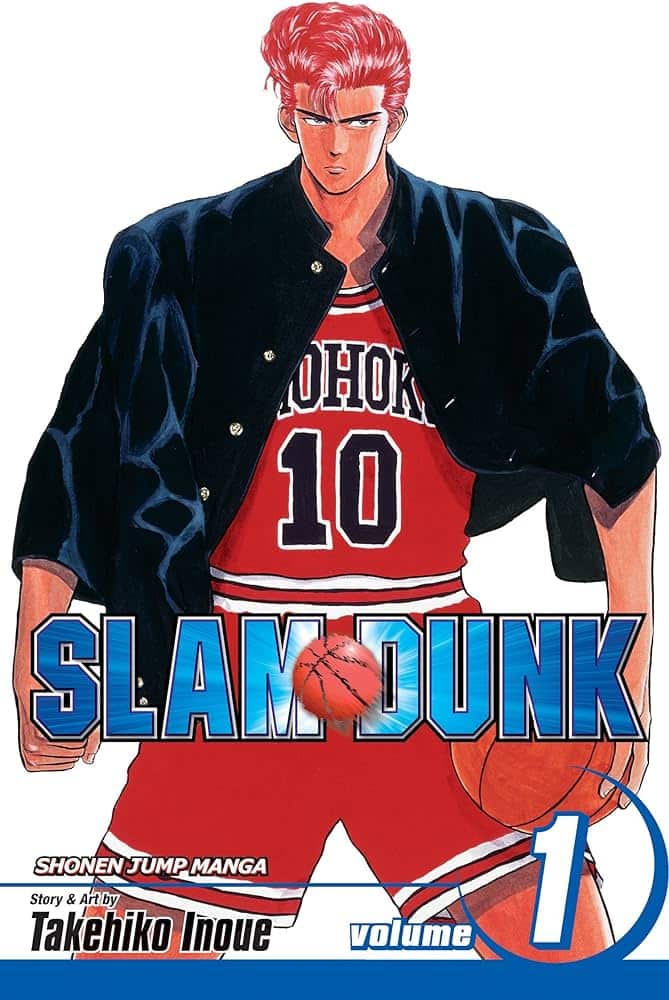
Slam Dunk
Writer/Artist: Takehiko Inoue
Translator: Kelly Sue DeConnick (volume 1), Joe Yamazaki (volume 2+)
Adaptation: Kelly Sue DeConnick
Editing: Jonathan Tarbox
Publisher: VIZ
Slam Dunk isn’t just a comic but a legend. Drawn by Takehiko Inoue, it’s one of the best selling manga series in history with over 170 million copies in circulation. It won the 40th Shogakukan Manga Award for shonen (boy’s) comics in 1994. The comic was adapted into a hugely popular anime series that ran for 110 episodes. Just last year, a film follow-up titled The First Slam Dunk (directed by Inoue himself) premiered to critical and commercial success.
Slam Dunk inspired Japanese children to become professional basketball players. It prompted Shonen Jump’s publisher Shueisha to start a scholarship for Japanese students to play basketball in the United States. It is no exaggeration to say that Slam Dunk changed the world–and it isn’t even Takehiko Inoue’s best.
I want to be clear, though, that Slam Dunk isn’t just a legend but a comic. It tells the story of Hanamichi Sakuragi, a high school delinquent who starts playing basketball in order to impress a girl. At first he doesn’t know how to pass or even dribble a ball. But that just makes him the perfect protagonist for a story like this. Inoue teaches the reader everything they need to know about basketball starting with the basics.
Sakuragi is a big goofball as prone to pratfalls as feats of shocking physical genius. His misadventures are entertaining whether or not you care about sports stories. Once Inoue starts tightening the screws in the second half of the comic, though, even the most sports skeptical may find that a love for basketball burns in their heart. This is also where Inoue takes off as an artist, evolving in leaps and bounds as the players do.
Inoue’s characters transform in the final match from cartoon characters to drawings with real anatomy, volume and weight. The pace becomes so decompressed that a single panel might cover just a tenth of a second. It may be my favorite finale in all of Shonen Jump. Slam Dunk might not be as polished as Inoue’s latter works Vagabond or Real, especially at the start. But it’s easily the comic of his that I love the most. — Adam Wescott
Follow Beat’s Bizarre Adventure to get weekly manga and webtoon recommendations!

Source link
